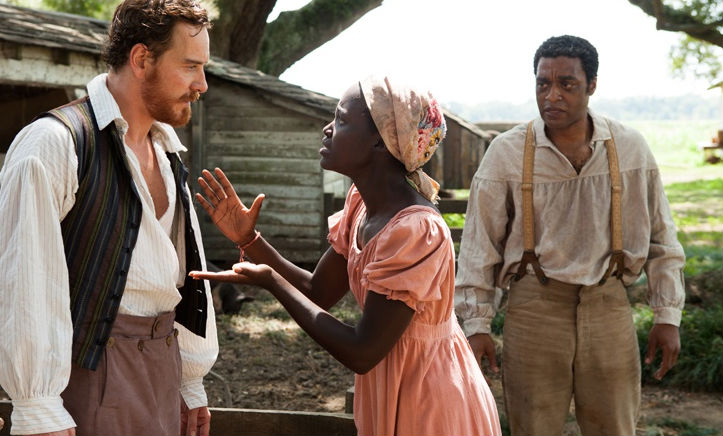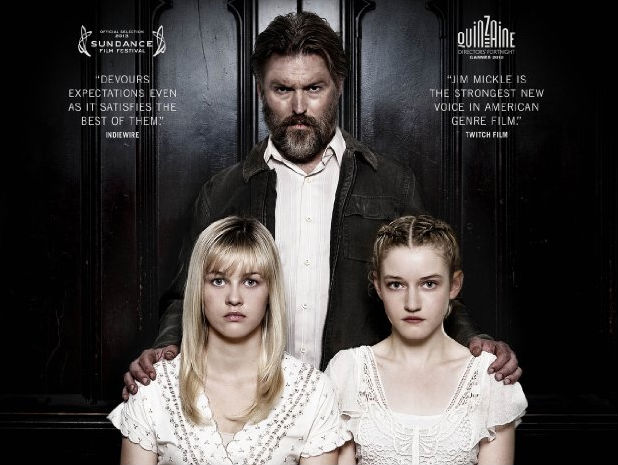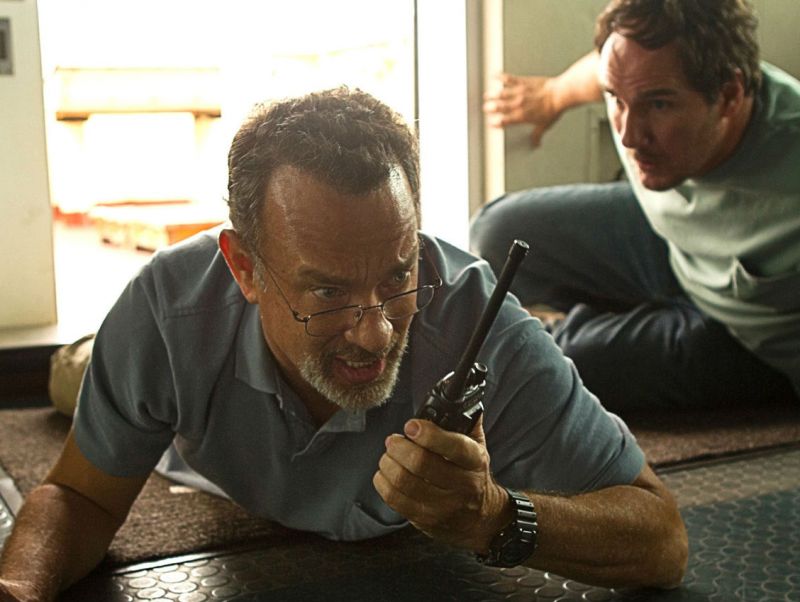The video has over 39 million views on YouTube. It documents a publicity stunt, commissioned by MGM and Screen Gems, to promote the remake of the horror movie Carrie, which hits theaters this Friday. The footage was shot at ‘sNice cafe in Manhattan’s West Village in July. The staff, management, and actors were in on the joke—and some unsuspecting customers were treated to an elaborately constructed horror show. In the middle of a crowded coffee shop, and unnamed patron (played by actress Andrea Morales) freaks out after someone (a stuntman) knocks coffee onto her laptop. Instead of chastising him like a normal person, she initiates a Carrie-like telekinetic rage-fest that includes sending the poor guy flying up a wall. (A fake wall and remote-controlled tables and chairs were used to pull off this act.) The reactions of shocked and confused customers were captured and edited into the video that went viral last week.
The stunt was pulled off by Thinkmodo, a three-man guerrilla-marketing agency based in New York City. “We’re now known for these disruptive types of marketing campaigns,” says Michael Krivicka, the agency’s cofounder. “We love to scare people.”
Krivicka started Thinkmodo in 2011 with James Percelay, a “digital troublemaker” and former film producer at Saturday Night Live. Krivicka was a video editor for 10 years, and made his first viral video in 2009, “about a fake iPhone app that let’s you see people naked,” he says. The pair coproduce and codirect their marketing campaigns, and play things rather close to the chest. “We’re control freaks; we like to oversee every small aspect of the production,” Krivicka says.
Prior to the success of the Carrie video, chances are good that you were familiar with Thinkmodo’s work. The agency was behind the stunt promoting the 2012 American sci-fi flick Chronicle: “Since the three main characters of the movie have the ability to fly, we came up with the idea of staging a few ‘flying people’ sightings around NYC,” Krivicka explained. “We achieved that illusion by having three custom-made aircraft (which were shaped like human beings) fly above designated areas in NYC and NJ.” Thinkmodo has done similar work for Limitless, Dead Man Down, and The Last Exorcism Part II. That last one involved tricking people into believing that a beauty shop was haunted by a possessed girl. Watch it here:
“We like to bring these ideas to the real world, and do some kind of social experiment with them: How would people react if they saw this in real life?” Krivicka says. “This kind of free media is worth million of dollars, if we get covered by CNN, BBC, New York Times, and so on. This is why the studios come to us.”
Thinkmodo has booked other corporate gigs, including a campaign for Swiss luxury-watch company TechnoMarine, for which they created an underwater night club, and one for the Cosmo for Guys iPad app, for which they made the “iPad Head Girl.” But movies studios are their favorite clients, and their film-promotion work makes up roughly half of what they do. Studios require them to be very careful about leaks prior to their video’s launch date. The people involved—actors, crew, those pranked (“marks,” as Krivicka calls them)—sign nondisclosure agreements and releases.
These types of viral videos also inspire the usual skepticism; for instance, the Glenn Beck-founded news network TheBlaze published a lengthy post on their “evidence” that the Carrie stunt was staged and thus fake. The incredulity is understandable, given that many popular web videos are quickly revealed to be hoaxes. But Krivicka insists that the shocked reactions are genuine, and that suspicions to the contrary are fueled in part by a lack of understanding of how these stunts are properly executed. First off, most of the people in the coffee shop were in on the joke, and the guys at Thinkmodo make no secret of this. “The baristas were all in on it, because we had to rehearse,” Krivicka says. The cafe was largely populated by extras, performers, and stunt crew, and only a handful of people (whose horrified faces are highlighted in the YouTube video) had no idea what was coming. ‘sNice staff confirmed this version of events to me. “Once their reaction was captured, we applauded, and came out and to thank them for participating, and filled them in,” Krivicka says.
Studio-backed publicity stunts require Thinkmodo to maintain a number of strict precautions. “We have certain degree of control over the situation, so nothing terrible happens,” Krivicka emphasizes. “We can’t just go up to someone on the street and give them a heart attack! When picking marks, we have to do things like feel them out, figure out if they’d fight back violently, or if they’d be too frail.” For instance, for the Dead Man Down stunt—a hidden-camera experiment that demonstrated how people would react to witnessing attempted murder in an elevator—the marks were picked through the selection process for a phony focus group. “That’s how we controlled it,” Krivicka says. For the Last Exorcism gag, the salon patrons were under the impression that they were being interviewed for a Valentine’s Day special. And when Thinkmodo signed on last year to help promote AMC’s The Walking Dead—by (how else!) unleashing zombies onto the streets of New York in broad daylight—their controls were again tested on a larger platform.
“There, we took bigger risks because we were in the open,” Krivicka notes. “Some zombies went after specific people who we picked out in the crowd and other zombies were stationed at specific corners of [the city]. Keep in mind, this is New York City. People are used to seeing crazy things on a daily basis, so our zombies were not that much out of the ordinary.”
Here’s Thinkmodo’s case study on their “zombie experiment”:
When Carrie comes out on Friday, it will arrive in theaters the same time as The Fifth Estate, a new action flick starring Sylvester Stallone, Arnold Schwarzenegger, and 50 Cent, and 12 Years a Slave, which many are already hailing as the best film of the year. So, the Carrie remake, starring Chloë Grace Moretz and Julianne Moore, might have some stiff competition. However well it performs at the weekend box office, one thing’s for certain: It had by far the more intriguing and ambitious marketing campaign.











